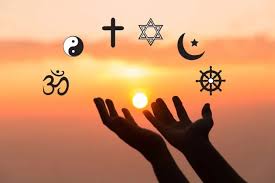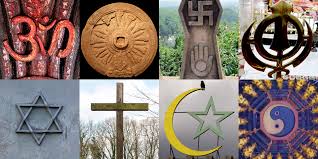10 Religious Practices Not Mentioned in Holy Writings.
Religious rituals are frequently essential components of worship and cultural activities, serving to foster a sense of community, remember significant occasions, and establish a connection between people and the divine. While the Bible, the Quran, and the Vedas serve as the foundation for many of these rites, other customs have developed over time and might not be specifically referenced in these holy books. 10 important religious practices that are observed by people of different religions but are not mentioned specifically in the holy books are listed below.

1. Christmas Celebration (Christians).
One of the most popular Christian holidays, Christmas commemorates the birth of Jesus Christ. But the Bible says nothing about Christmas celebrations, with their trees, decorations, and special December 25th dates. A celebration on the 25th of December in the Holy scriptures is attributed to the day King Eʹvil-merʹo·dach of Babylon released King Je·hoiʹa·chin of Judah from prison bonds and asked him to join him on the table and also a day of celebration of a certain Sun god in the bible so, Christmas customs evolved hundreds of years after the life of Jesus, fusing Christian motifs with pre-Christian winter solstice celebrations. Although the Bible mentions Jesus’ birth, it makes no mention of a particular day or style of celebration.
2. Ash Wednesday and the Lenten season (Christianity).
In Christian tradition, Ash Wednesday heralds the start of Lent, forty days of fasting, prayer, and introspection that ends with Easter. As a sign of repentance, believers receive ashes on their foreheads during Ash Wednesday ceremonies. Lenten season is when Catholics are supposed to fast and deny themselves other luxuries. Nevertheless, the Bible makes no mention of Ash Wednesday or Lent. The early Christian church created these customs to help people get ready spiritually for Easter. (Davies, J. G. (1980). Christian Worship: Its History and Meaning. SCM Press.)
3. Baptism of the Dead (Mormonism).
The baptism of the dead is a special rite practiced by members of the Church of Jesus Christ of Latter-day Saints (Mormonism), in which living relatives are baptized on behalf of departed ancestors who were not able to hear the gospel during their lifetimes. Although there are references to baptism in the Bible, there is no mention of baptizing the dead. To emphasize redemption for all souls, this practice evolved within Mormonism.
4. Dia de los Muertos (Mexico).
In Mexico, the Day of the Dead, or Dia de los Muertos, is largely a cultural event, but it also has a strong religious component, especially in Catholic communities. During this celebration, decorated graves, shrines, and food offerings are used to honor departed loved ones. The ceremony has no basis in the Bible or other sacred texts, although reflecting Catholic belief in the hereafter. Rather, it combines native Mexican customs with Catholic rituals. (Hinnells, J. R. (1991). The Penguin Dictionary of Religions. Penguin Books.)
5. Sabbath Candles (Judaism)
Candles are burned in many Jewish homes to greet the Sabbath (Shabbat), which is a day set aside for relaxation and introspection. The Torah makes no mention of this widely practiced custom; rather, it is a customary rite created by rabbinic authorities. Though its roots are in post-biblical Jewish law, candle lighting is a custom that is said to infuse tranquility into the home and sanctify the Sabbath.
6. Holy Water (Christianity).
In Christian traditions, holy water is frequently used for protection, blessings, and baptisms, particularly in the Roman Catholic Church. The Bible mentions water often, including in the account of Jesus’ baptism, but it makes no explicit mention of the customary usage of holy water. As the early church devised symbols for blessings from God and cleansing, the practice changed.
7. Vaisakhi (Sikhism).
Vaisakhi is a significant holiday in Sikhism, commemorating Guru Gobind Singh’s establishment of the Khalsa, the group Lighting Incense (Buddhism of initiated Sikhs, in 1699. Although the Guru Granth Sahib, the sacred book of Sikhism, makes no mention of Vaisakhi, the festival has great significance for Sikhs. Rather, it honors a significant occasion in Sikh history and illustrates how Sikh identity has changed through time.
8. Lighting Incense (Buddhism).
Lighting incense is a traditional rite in many Buddhist practices, signifying attention, divinity, and purity. Nevertheless, the earliest Buddhist writings, including the Pali Canon, do not mention this ceremony. Later on, as Buddhism expanded throughout Asia, it blended with indigenous traditions that employed incense in religious rites. Nowadays, burning incense is a common practice in many Buddhist homes and temples.
9. Kumbh Mela (Hinduism).
One of the biggest religious events on earth, the Kumbh Mela takes place every 12 years at four holy river sites in India. To atone for their sins, millions of Hindu pilgrims take part in ritual bathing. The Vedas and other ancient texts do not specifically reference the Kumbh Mela as a planned celebration, despite the importance of the idea of purifying by water in Hinduism. This is a centuries-old tradition that combines spiritual practice with mythology.
10. Shraddha (Hinduism).
Hindus undertake the Shraddha ritual in remembrance of their departed ancestors. To assist the deceased’s spirit in finding peace in the hereafter usually entails providing food and prayers. While a fundamental component of Hinduism is respect for the ancestors, The Vedic scriptures do not mention the Shraddha ceremonies. Rather, they are expounded in later works like the Puranas and have been shaped by generations of Hindu tradition.
Despite being strongly rooted in their respective religions, these ten rites serve as illustrations of how religious practices can change and adapt throughout time. Rather than directly stemming from the teachings of sacred texts, they frequently originate from cultural, historical, or regional traditions. These rituals continue to be extremely important in the spiritual life of millions of people worldwide, even though they are not found in sacred writings. ( Burkert, W. (1985). Greek Religion. Harvard University Press.)

